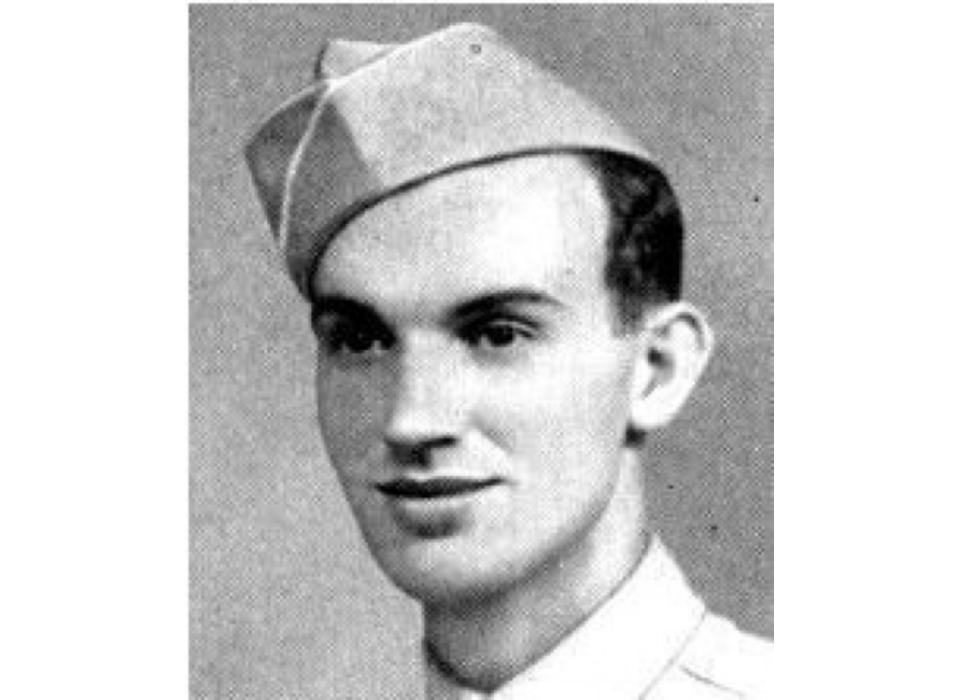Top image: T/Sgt Clinton Hedrick. Photo courtesy of (https://www.cmohs.org/recipients/clinton-m-hedrick)
Born in the Appalachian Mountains on May 1, 1918, in Cherry Grove, West Virginia, T/Sgt. Clinton Hedrick enlisted in the US Army in September 1940 in Columbus, Ohio, before America’s entry into the war. He was assigned to the 550th Airborne Infantry Battalion and fought in the Battle of the Bulge beginning in December 1944. The unit’s losses were so severe that the 550th was disbanded, with Hedrick eventually assigned to the 17th Airborne Division in the 194th Glider Infantry Regiment.
By spring 1945, Allied forces were pushing into Germany, with the Rhine River posing a significant natural obstacle. Capturing only one bridge intact at Remagen, the Allies eventually developed Operation VARSITY, a plan involving the use of airborne troops to help secure bridge heads on the far side of the Rhine. Over 9,000 US soldiers in 836 C-47s and 72 C-46s, towing 906 CG-4A Waco gliders, took off after 0700 on March 24, 1945. In the largest airborne operation of the war, paratroopers hit their landing zones and began establishing the Allied presence on the east side of the river.
Assigned to “I” Company, Hedrick’s glider endured a severe antiaircraft barrage while inbound to the landing zone. Finally touching down north of the town of Wesel, T/Sgt. Hedrick’s mission and that of his unit was to protect the division’s right flank. Eventually he and his fellow troopers operated near the town of Lembeck and encountered German troops in heavy combat. When one of his men asked him why he didn't duck for cover, he reportedly replied, “It makes no difference. I'm six feet standing up or laying down. If I’m going to get it, I’m going to get it.” Over two days of fighting on March 27–28, T/Sgt. Hedrick knocked out multiple enemy machine-gun positions. During this period one of his soldiers described him as “fearless through two days of heavy fighting.” On March 28, he found himself facing Wehrmacht troops near the town’s medieval castle and coolly subdued a German assault. Chasing German troops retreating into the castle, Hedrick went above and beyond the call of duty. As his Medal of Honor citation specifies:
He displayed extraordinary heroism and gallantry in action on 27–28 March, 1945, in Germany. Following an airborne landing near Wesel, his unit was assigned as the assault platoon for the assault on Lembeck. Three times the landing elements were pinned down by intense automatic-weapon fire from strongly defended positions. Each time, T/Sgt. Hedrick fearlessly charged through heavy fire, shooting his automatic rifle from his hip. His courageous action so inspired his men that they reduced the enemy positions in rapid succession. When six of the enemy attempted a surprise, flanking movement, he quickly turned and killed the entire party with a burst of fire. Later, the enemy withdrew across a moat into Lembeck Castle. T/Sgt. Hedrick, with utter disregard for his own safety, plunged across the drawbridge alone in pursuit. When a German soldier, with hands upraised, declared the garrison wished to surrender, he entered the castle yard with four of his men to accept the capitulation. The group moved through a sally port, and was met by fire from a German self-propelled gun. Although mortally wounded, T/Sgt. Hedrick fired at the enemy gun and covered the withdrawal of his comrades. He died while being evacuated after the castle was taken. His great personal courage and heroic leadership contributed in large measure to the speedy capture of Lembeck and provided an inspiring example to his comrades.
Only 26 at the time of his death, Hedrick was posthumously awarded the Medal of Honor on October 19, 1945. He was originally laid to rest in a modest cemetery in his hometown of Cherry Grove. On Memorial Day 1991, he and his parents were moved to a more notable location at North Fork Memorial Cemetery in Riverton, West Virginia, with accompanying markers. Additionally, the main football field at Fort Bragg, North Carolina; a segment of US Route 33; and a scholarship at his high school all commemorate his service to the nation.
John Curatola, PhD
John Curatola, PhD, is the Samuel Zemurray Stone Senior Historian at the Jenny Craig Institute for the Study of War and Democracy.
Cite this article:
MLA Citation:
APA Citation:
Chicago Style Citation:





![Max Fuchs, New York City cantor, sings as Rabbi Sydney [sic] Lefkowitz, Richmond, VA, conducts the first Jewish services from Germany.](/sites/default/files/styles/max_650x650/public/2025-10/image1.jpg)



